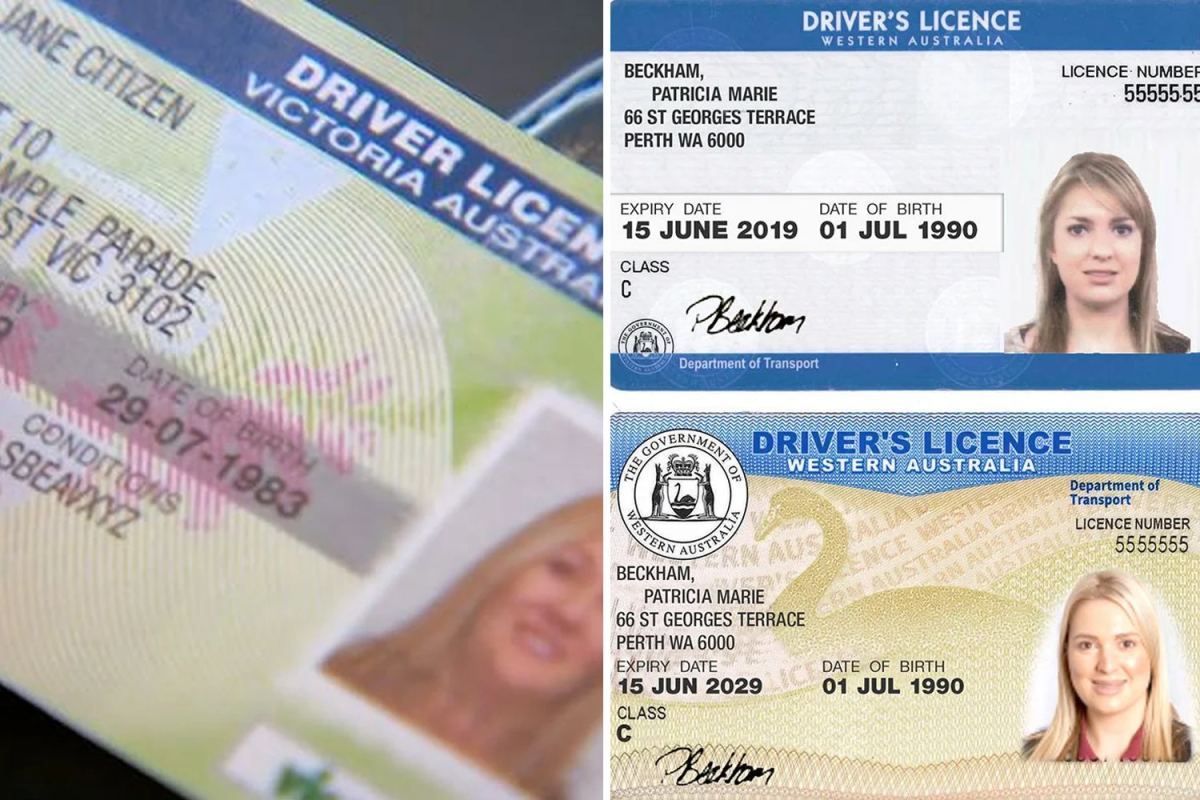
The days of long queues at government offices and the frustration of forgotten passwords may soon be a thing of the past.
Australians could soon verify their identity with nothing more than a simple selfie.
This ambitious shift is part of a nationwide rollout of facial recognition technology.
The National Driver Licence Facial Recognition Solution (NDLFRS) is designed to merge biometric data from driver’s licences and passports, allowing both government departments and private businesses to verify identity with greater ease.
Instead of merely checking document details, the system compares your face to the photo already on file, adding an extra layer of security to everyday transactions.
The technology builds on the existing Document Verification Service, which already serves 4,451 organisations, including over 4,200 private sector customers.
Unlike its predecessor, the new Face Verification Service matches actual appearances, not just document information, making fraud much harder.
At present, only the Australian Taxation Office uses the facial verification system through the myGovID app, but this will expand, with Western Australian driver licences expected to join by the end of 2025.
Privacy has been a key focus in the system’s design, with assessments from the Attorney-General’s Department finding no significant risks.
Facial images must be destroyed once verification is complete, unless specific circumstances require otherwise, and all requests and responses are encrypted.
The system operates under robust oversight, including annual assessments by the Office of the Australian Information Commissioner.
'Australians rightly expect greater protections, transparency and control over their personal information.'
For everyday users, the rollout could transform interactions with government and private services.
Instead of visiting a Centrelink office, Australians might simply take a selfie via a secure app to confirm their identity.
Banking, insurance claims, and government services could become accessible from the comfort of home.
Biometric decisions will still involve human oversight, and individuals can choose non-biometric verification methods if preferred.
The system provides either a simple ‘match’ or ‘no match’ when verification is requested, accessible through a web-based portal for one-to-one image comparison.
Participation is voluntary.
Drivers who do not wish to have their information included can contact their state road agency to opt out, with no need to update their existing licence.
The Identity Verification Services Act 2023 sets the legal framework, ensuring government and non-government entities can benefit without compromising privacy.
Western Australia is expected to lead the rollout by the end of 2025, with other states and territories joining once individual agreements on data sharing and protection are in place.
What you need to know about facial recognition ID
[/scopelistwrap]
The technology also aims to reduce identity theft by linking verification to unique facial features, making it harder for criminals to misuse stolen documents.
Older Australians, who are often targeted by scams, could find this extra security particularly valuable.
A revised privacy impact assessment is expected by mid-2025, with a compliance plan finalised by June 2025, reflecting ongoing government oversight.
The introduction of facial recognition represents a significant change, but voluntary participation, strong privacy protections, and maintained alternatives suggest a cautious and measured approach.
This video dives into how facial recognition technology is being used to verify identity, just like the system described in the article.
Find out who’s scanning your face and why—it’s worth a look!
What This Means For You
The NDLFRS uses the photos already on your driver’s licence and passport for verification, so there’s no need to update or replace your documents.
While the system is set to roll out by the end of 2025, you have the choice to opt out at any time and continue using traditional methods to prove your identity.
All data is carefully encrypted and must be destroyed after verification unless the law requires otherwise.
For everyday Australians, this means added convenience and security without forcing you to change how you currently access government or private services.
You can enjoy the benefits of modern ID technology while still keeping control over your personal information.
If you found the facial recognition ID rollout intriguing, there’s another story that shows how technology is making identity verification faster and simpler in real life.
This next article explores a system already in use that allows secure verification without needing to submit physical documents.
It’s a great example of how digital tools are changing the way we prove who we are, with convenience and security combined.
Read more: ‘World-leading’: New system promises to make ID verification a breeze
Australia Advances National Facial Recognition Network Despite Privacy Concerns — Explains how the NDLFRS will merge biometric data from driver’s licences and passports for identity verification by government and private sectors.
https://reclaimthenet.org/australia-facial-recognition-network-ndlfrs-privacy-concerns
Identity verification services | Attorney-General's Department — Details the use of state or territory driver licences for biometric verification under the NDLFRS framework.
https://www.ag.gov.au/national-security/identity-security/identity-verification-services
Identity Verification Services Assessment Report – Privacy Obligations | OAIC — Provides data on current users of identity verification services, including 4,451 organisations and 4,251 private sector customers.
https://www.oaic.gov.au/privacy/privacy-assessments-and-decisions/privacy-assessments/identity-verification-services-assessment-report-privacy-obligations
Identity Verification Services Assessment Report – Privacy Obligations | OAIC — Notes that only the Australian Taxation Office currently uses the facial verification system through myGovID.
https://www.oaic.gov.au/privacy/privacy-assessments-and-decisions/privacy-assessments/identity-verification-services-assessment-report-privacy-obligations
Access our services | IDMatch—Document Verification Service — Confirms that Western Australian driver licences will be added to the system by the end of 2025.
https://www.idmatch.gov.au/access-our-services
Australia's new face verification system will actually improve privacy—iTnews — Reports that privacy impact assessments found no significant risks in the system's design.
https://www.itnews.com.au/news/australias-new-face-verification-system-will-actually-improve-privacy-479442
Australia's new facial verification system goes live—Security—Software—iTnews — Confirms the Attorney-General's Department found no significant privacy risks during assessment.
https://www.itnews.com.au/news/australias-new-facial-verification-system-goes-live-441484
Identity Verification Services Privacy Statement | IDMatch — Explains that facial images must be destroyed after verification unless specific conditions apply.
https://www.idmatch.gov.au/resources/identity-verification-services-privacy-statement
Access our services | IDMatch—Document Verification Service — States that all requests and responses in the system are encrypted for security.
https://www.idmatch.gov.au/access-our-services
Identity Verification Services Privacy Statement | IDMatch — Describes the oversight framework, including annual assessments by the OAIC.
https://www.idmatch.gov.au/resources/identity-verification-services-privacy-statement
Australia Advances National Facial Recognition Network Despite Privacy Concerns — Notes that biometric decisions involve human oversight and users can opt for non-biometric verification.
https://reclaimthenet.org/australia-facial-recognition-network-ndlfrs-privacy-concerns
Australia's new facial verification system goes live—Security—Software—iTnews — Details the web-based portal that allows one-to-one comparison with government records.
https://www.itnews.com.au/news/australias-new-facial-verification-system-goes-live-441484
Identity verification services | Attorney-General's Department — Explains the legislative framework under the Identity Verification Services Act 2023.
https://www.ag.gov.au/national-security/identity-security/identity-verification-services
Identity Verification Services Privacy Statement | IDMatch — Confirms the NDLFRS is expected to be operational in 2025 and subject to state agreements.
https://www.idmatch.gov.au/resources/identity-verification-services-privacy-statement
Identity verification services | Attorney-General's Department — Reiterates that the NDLFRS is expected to be operational in 2025.
https://www.ag.gov.au/national-security/identity-security/identity-verification-services
Identity verification services | Attorney-General's Department — Highlights that secure identity verification is critical to reducing fraud and protecting privacy.
https://www.ag.gov.au/national-security/identity-security/identity-verification-services
Identity Verification Services Assessment Report – Privacy Obligations | OAIC — Notes that a revised privacy impact assessment is expected by mid-2025 with a compliance plan to follow.
https://www.oaic.gov.au/privacy/privacy-assessments-and-decisions/privacy-assessments/identity-verification-services-assessment-report-privacy-obligations
Do you feel ready to trust a selfie with your identity, or does the idea of facial recognition make you uneasy?







